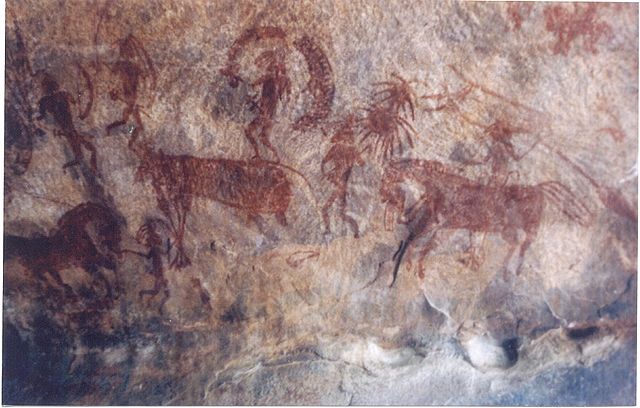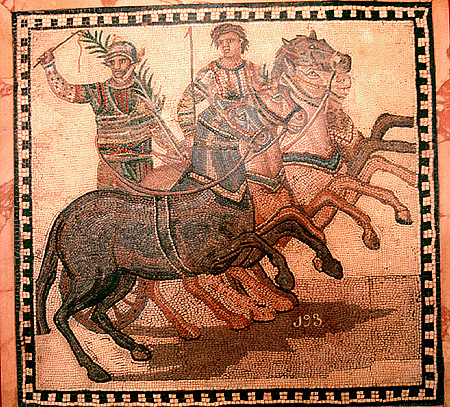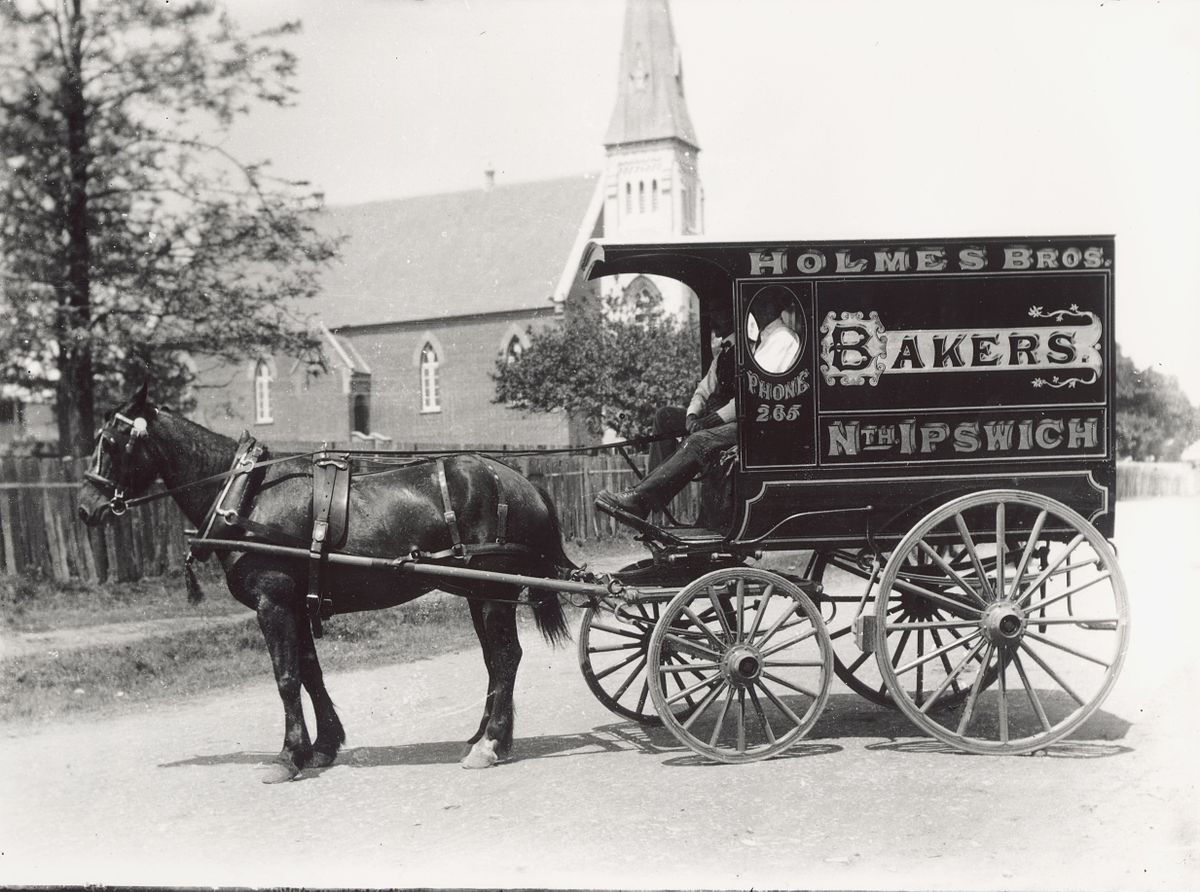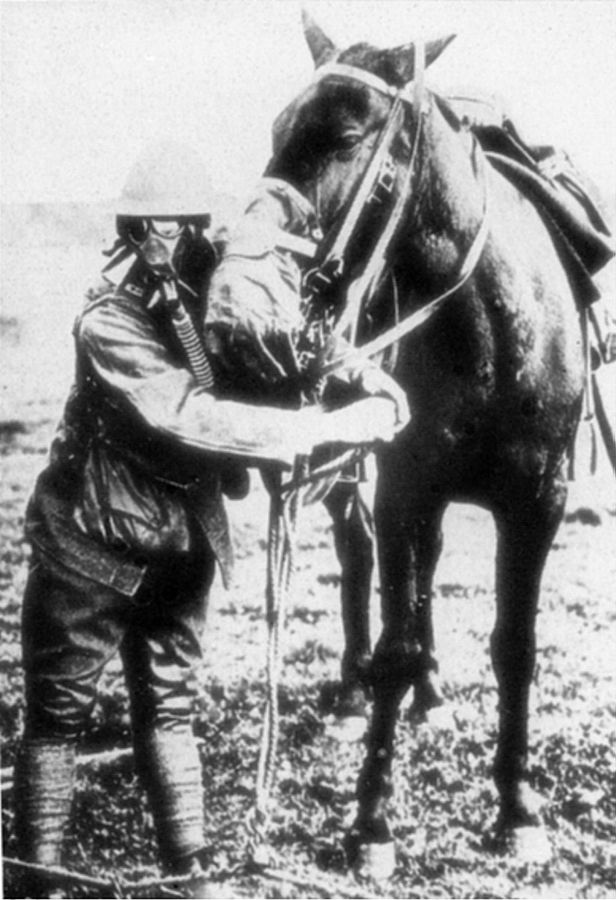HOME
The Impact of the Horse – The Natural Horseman

By Steve Stevens
We have had over 6,000 years of history with the horse domesticated and around a hundred with the automobile. What if the horse had not existed? How would the West have been won and our great country explored? We can always go deeper and talk about civilizations being built and conquered. The horse is a symbol to so many of healing, strength, partnership and freedom.

Bhimbetka rock painting showing man riding on horse, India. https://commons.wikimedia.org/wiki/File:Bhimbetka_rock_paintng1.jpg
(licensed under the Creative Commons Attribution-Share Alike 3.0 Unported license. Subject to disclaimers.)
Can you imagine watching a western without a horse? John Wayne comes bolting out of the canyons of Monument Valley on an ox or a cow. Ben-Hur’s chariot pulled by some giant goats. Alexander the Great conquering the world on the back of an emu. You get my point. Eight million horses died in the first World War alone. That’s not counting every other skirmish and battle since the horse has been domesticated.

A winner of a Roman chariot race, from the Red team. https://en.wikipedia.org/wiki/Chariot_racing#/media/File:Winner_of_a_Roman_chariot_race.jpg (public domain)
What other animal has given more to the survival of man? I train horses for people, who in general, want to ride around in their pasture or arena, go on a trail ride or do an obstacle challenge. Most of the cattle ranchers I know use four wheelers these days. They certainly don’t go exploring and settling new worlds on the horse anymore. I know the horse has transitioned more for a means of entertainment for the human, but the horse can still be seen being used to search for people in places that can’t be reached by vehicle, used for wellness and healing, and can be found on some ranches gathering cattle and checking fence.
Unfortunately, the human masses don’t think they have the need for our most noble creature like they once did. What I have seen the horse do personally for people is to heal from loss, build confidence where none was before, and give some humans purpose. In the state of the world where many children would rather play on an IPad then go outside and play…In the United States, where the rate of obesity and health issues are growing at an alarming rate.

A bakery delivery wagon in Queensland, Australia. https://en.wikipedia.org/wiki/Wagon#/media/File:Baker%27s-van-r.jpg
(public domain)
Where we are divided over religion and politics more than ever? Maybe we need the horse as much now than ever before. The horse unites people. Gives them hope and treats each human as an equal. They don’t judge us. They could care less if we are rich, handsome, ugly or weak. They just want our comfort and leadership. Maybe, just maybe, if we listened and studied the horse we could grow more as humans and as a society. Every time I ride or am around a horse, I never want to forget what the horse has given to mankind or what their potential is for future generations. Special thanks to a friend who sent me a great video on the horse this morning that inspired me to write this week’s column.
Farm & Ranch
Acorn Toxicity

By Barry Whitworth, DVM, MPH
With the prolonged drought, most pastures in Oklahoma end up in poor condition. With the lack of available forage, animals may go in search of alternative foods.
If oak trees are in the pastures, acorns may be a favorite meal for some livestock in the fall. This may result in oak poisoning.
Oak leaves, twigs, buds, and acorns may be toxic to some animals when consumed.
To read more, pick up a copy of the November edition of North Texas Farm & Ranch magazine, available digitally and in print. To subscribe by mail, call 940-872-5922.

Farm & Ranch
Silver Bluestems

By: Tony Dean
There are a handful of grasses on North Texas grazing lands ranchers need to know, not because they are highly desirable, but rather because they are not of much value. I call them “decom” plants, which is am acronym for “Don’t Ever Count On Me.” Silver bluestem is a “decom” grass.
Silver bluestem is a perennial which grows in all areas of Texas. It can survive in almost all soil types, and in full sun conditions or in semi shade. It grows up to three feet tall and is easily recognized with the presence of the white fuzzy seed head. Also, one of the identifying characteristics of Silver bluestem is a bend in the stems at each node, causing the plants to take on a rounded shape as they mature.
To read more, pick up a copy of the November edition of North Texas Farm & Ranch magazine, available digitally and in print. To subscribe by mail, call 940-872-5922.

Farm & Ranch
Meanwhile Back At The Ranch

By: Rayford Pullen
Fall is here which means winter is closing in on us and before we officially get into winter, we need to make sure our factories are either producing or will be producing in a few months.
We have been pregnancy testing our cows this fall and if they are not bred or nursing a calf, we are bidding them adios. With annual costs somewhere between $900.00 and $1,000.00 per cow, those cows not producing a live weaned calf are costing us quite a bit.
To read more, pick up a copy of the November edition of North Texas Farm & Ranch magazine, available digitally and in print. To subscribe by mail, call 940-872-5922.
-

 Country Lifestyles2 years ago
Country Lifestyles2 years agoScott & Stacey Schumacher: A Growth Mindset
-

 Country Lifestyles8 years ago
Country Lifestyles8 years agoStyle Your Profile – What your style cowboy hat says about you and new trends in 2017
-

 HOME8 years ago
HOME8 years agoGrazing North Texas – Wilman Lovegrass
-

 Equine1 year ago
Equine1 year agoThe Will to Win
-

 Country Lifestyles5 years ago
Country Lifestyles5 years agoAmber Crawford, Breakaway Roper
-

 Outdoor9 years ago
Outdoor9 years agoButtercup or Primrose?
-

 Country Lifestyles8 years ago
Country Lifestyles8 years agoJune 2016 Profile – The man behind the mic: Bob Tallman
-

 Country Lifestyles8 years ago
Country Lifestyles8 years agoDecember 2016 Profile, Rusty Riddle – The Riddle Way





